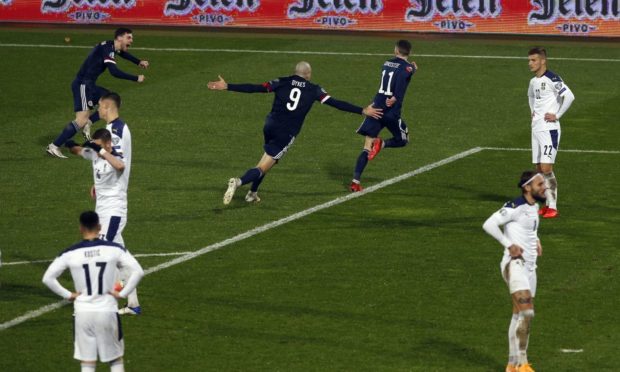Scotland don’t make things easy but never on the long road to the Euro finals did it look tougher than the hellish night in Haifa.
The date was Thursday, October 11, 2018 and the location was just a few miles south of Israel’s borders with Syria and Lebanon.
At this early stage of the Nations League, if you were being honest you never fully understood its implications for possible qualification but you did know that the game mattered.
I travelled on my own to Israel to cover the game, basing myself in Haifa near the venue, the Sammy Ofer Stadium, for a couple of days.
The rest of the Scottish media pack stayed south with the vast majority of the Tartan Army in Tel Aviv.
The Israelis were ranked 94th in the world at the time and had only beaten Andorra and Liechtenstein at home since 2014.
Sadly, Scotland were to become their third victims.
I wrote in my match report that the Scots should count their blessings in the Holy Land because it could and should have been a lot, lot worse than a 2-1 defeat.
Alex McLeish’s men took the lead on 25 minutes when Charlie Mulgrew scored from the penalty spot after Steven Naismith had been fouled.
However, the one-way traffic told you that the scoreline wasn’t going to stay that way and Dor Peretz eqialised for Israel before Scotland defender Kieran Tierney shanked a clearance into his own net with 16 minutes left. By that time the Scots had been reduced to 10 men after John Souttar got sent off.
It was a nightmare.
As I made my way to the post-match media conference, I was joined in the lift by two elderly Israeli journalists.
The exchange has annoyed me ever since.
They clocked I was Scottish and proceeded to rip “my team” to shreds.
“That was not Scotland,” one said. “That was not the team that has had Kenny Dalglish and Graeme Souness play for them. That was terrible.”
Sadly, my wit and repartee deserted me at the time but it was hard to argue that Scotland were not, in fact, terrible.
Just as I was about to mumble some sort of desperate reply, the other reporter picked on defender Stephen O’Donnell, claiming he would have been better off serving food in one of the stadium kiosks instead of playing.
It was nice, then, to see the same O’Donnell in the Scotland side that reached the finals. He had the last word in that particular debate.
In the mixed zone interview area afterwards, a crestfallen Tierney apologised to everyone for his own goal. You stood there looking at a well-paid Celtic star and realised he was even more distraught than the rest of us.
As was the case with O’Donnell, it was wonderful to see the now Arsenal defender Tierney leaping about celebrating on the pitch at full-time in Serbia.
From a Haifa horror show to a Belgrade blockbuster, with some thrllls and spills in between. It wouldn’t be Scotland if it were easy, would it?
